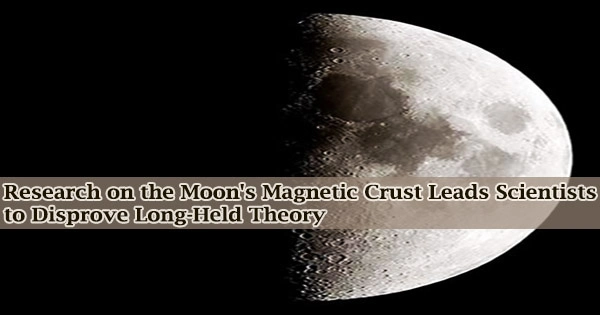Scientists now understand how and why the Moon’s crust is magnetized thanks to new multinational study, thus “debunking” one of the long-held hypotheses.
Dr. Katarina Miljkovic, an Australian researcher and co-author of the study from the Curtin Space Science and Technology Centre at Curtin University’s School of Earth and Planetary Sciences, outlined how the new study builds on decades of previous research by other experts.
“There are two long term hypotheses associated with why the Moon’s crust might be magnetic: One is that the magnetization is the result of an ancient dynamo in the lunar core, and the other is that it’s the result of an amplification of the interplanetary magnetic field, created by meteoroid impacts,” Dr. Miljkovic said.
“Our research is a deep numerical study that challenges that second theory the impact-related magnetization and it essentially ‘debunks’ it. We found that meteoroid impact plasmas interact much more weakly with the Moon compared to the magnetization levels obtained from the lunar crust.”
This discovery leads us to the conclusion that the only conceivable reason for the magnetism of the Moon’s crust is a core dynamo.
In addition to the Moon, Mercury, some meteorites, and other small planetary bodies all have a magnetic crust. Perhaps other equivalent mechanical dynamo mechanisms, such as those we now believe to have been in operation on the Moon, could have been in effect on these objects as well.
Dr. Rona Oran
Dr. Miljkovic provided the researchers with numerical estimations of the vapour production that took place during the massive meteoroid impact bombardment on the Moon about 4 billion years ago in order to carry out her share of the research.
“When we look at the Moon with the naked eye, we can see these large craters caused by ancient meteoroid impacts. They are now filled with volcanic maria, or seas, causing them to look darker on the surface,” Dr. Miljkovic said.
“During these impact events, the meteoroids hit the Moon at a very high speed, causing displacement, melting, and vaporisation of the lunar crust. My work calculated the mass and thermal energy of the vapour emitted during these impacts. That was then used as input for further calculations and investigation of the behaviour of the ambient magnetic field at the Moon, following these large impact events.”
“Basically, we made a much more inclusive, high fidelity and high-resolution investigation that led to debunking of the older hypothesis.”
Dr. Rona Oran, the study’s principal investigator and an associate professor in the Department of Earth, Atmospheric and Planetary Sciences (EAPS) at the Massachusetts Institute of Technology (MIT), said the impact simulations, in combination with plasma simulations, harness the most recent advancements in scientific codes and computing power and allowed the team to perform the first simulations that could realistically capture and test this long-proposed mechanism.
By using such methods, the team was able to examine numerous scenarios and, as a result, rule out this process under any plausible circumstances that would have prevailed during the impact.
This denial may have significant ramifications for understanding what magnetized the Moon and even other solar system objects with mysteriously magnetized crusts.
“In addition to the Moon, Mercury, some meteorites, and other small planetary bodies all have a magnetic crust. Perhaps other equivalent mechanical dynamo mechanisms, such as those we now believe to have been in operation on the Moon, could have been in effect on these objects as well,” Dr. Oran said.





